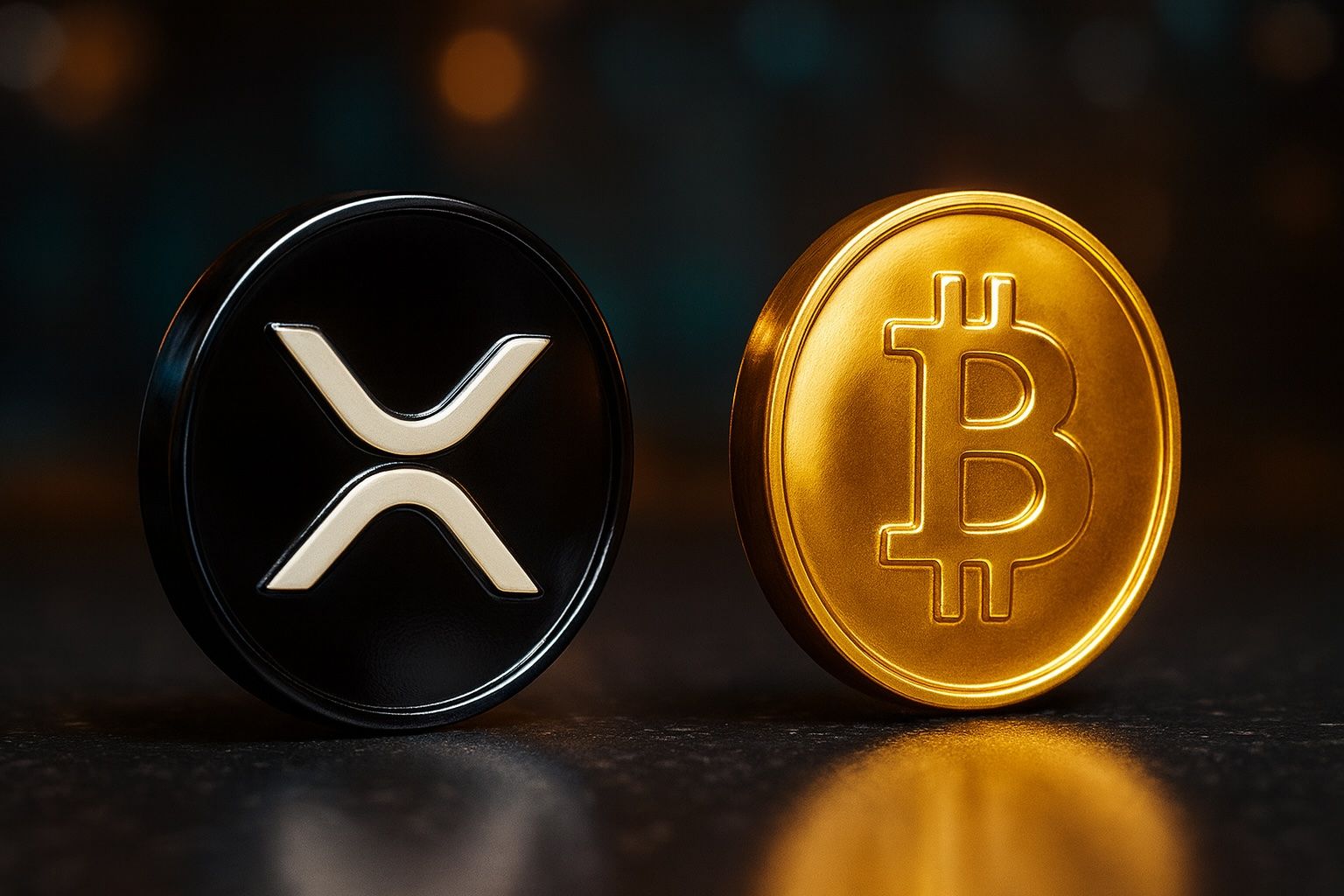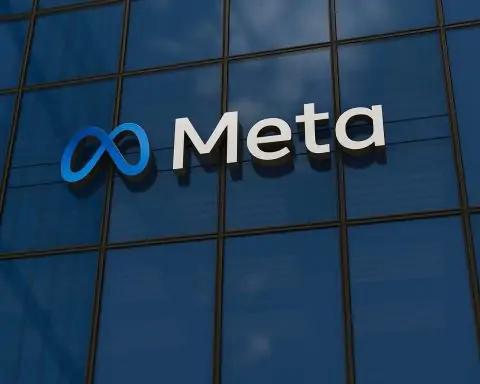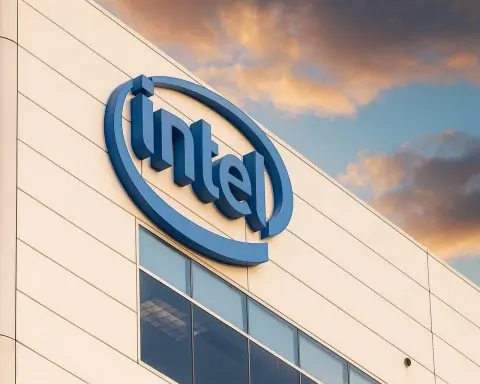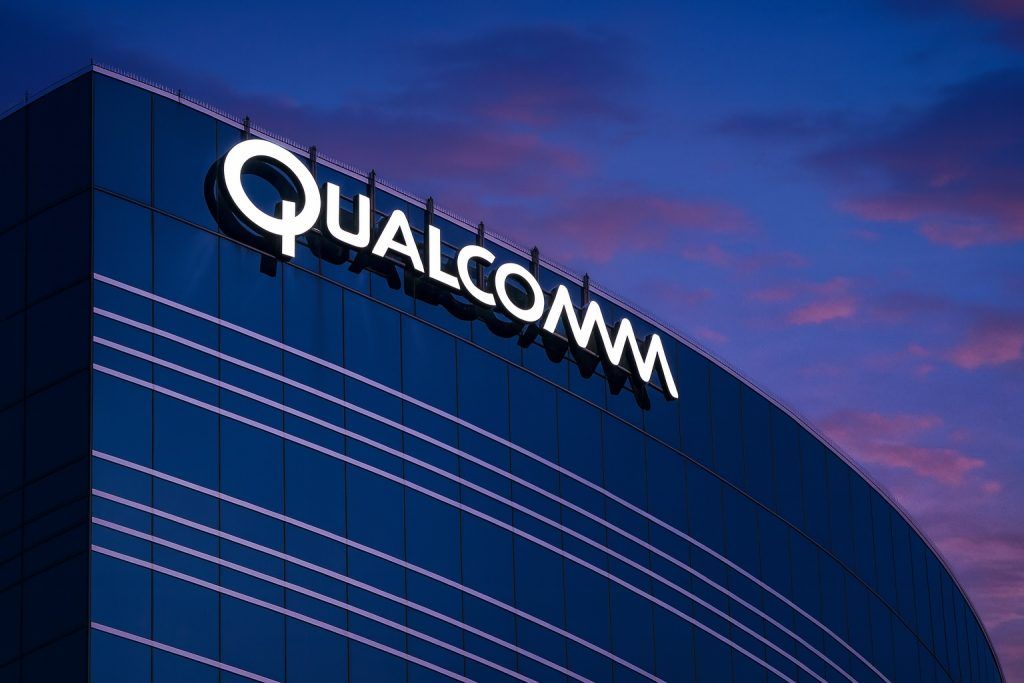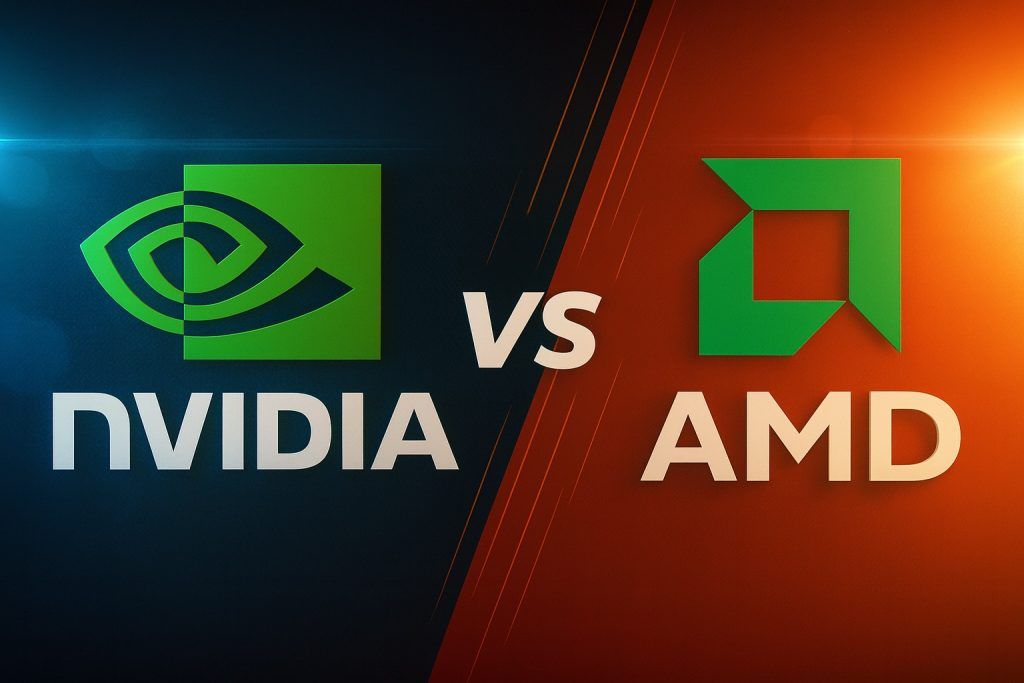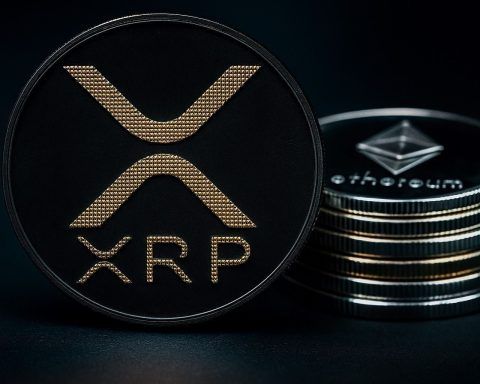- Record Prices: Bitcoin surged to a new all-time high above $125,000 in early October 2025, shattering its previous 2021 peak (~$69k) [1]. XRP rallied near $3.00, its highest levels since the 2018 boom, after exploding over 380% from mid-2023 lows [2].
- Market Capitalization: Bitcoin’s market cap now exceeds $2 trillion, cementing its #1 rank and over 50% share of the entire crypto market [3]. XRP’s market cap is around $150 billion, making it the #3 cryptocurrencybehind BTC and Ethereum [4].
- Legal & Regulatory Boost: A crypto-friendly shift in U.S. regulation provided tailwinds. Bitcoin spot ETFsfinally gained approval in 2024, spurring institutional inflows [5]. XRP scored a landmark legal victory – courts ruled it is not a security in public markets, and by August 2025 the SEC’s case against Ripple ended with a settlement (a $125 million fine) [6] [7]. This clarity led major U.S. exchanges to relist XRP and triggered a wave of new ETF filings for XRP.
- Institutional Adoption Soars: Wall Street and big investors are pouring in. Spot Bitcoin ETFs attracted billions in fresh capital (over $3.2B of inflows in one week of October) [8], with heavy demand from hedge funds and asset managers. BlackRock’s Bitcoin ETF alone drew ~$1.8B in a week [9]. Meanwhile, institutions bought over $1.1 billion of XRP in 2025 for Ripple’s payment network [10], and major banks like Santander piloted XRP for cross-border transfers [11].
- Macroeconomic Drivers: Global economic jitters and safe-haven demand have supercharged Bitcoin’s rally. A weak U.S. dollar (down ~12% in 2025) and a U.S. government shutdown in October drove investors to “digital gold” like BTC [12] [13]. At the same time, XRP is gaining as Ripple’s banking partnerships grow, with the XRP Ledger averaging over 2 million transactions per day as fintechs adopt it for fast, low-cost payments [14].
- Price Outlook & Sentiment: Experts remain bullish but divided on magnitude. Some analysts see Bitcoin climbing to $135K–$150K in the coming weeks amid ongoing ETF momentum [15], and $200K+ by late 2025 according to optimistic forecasts [16]. Predictions for XRP range from roughly $3–$4 by end-2025 (per a Finder panel) [17] to more bullish targets of $5+ if an XRP ETF is approved and adoption accelerates [18]. Both assets face familiar volatility, but improving market sentiment (crypto Fear & Greed Index in “greed” territory) signals cautious optimism going forward [19] [20].
Introduction
After years of twists and turns, Bitcoin and XRP are center stage in 2025’s crypto market resurgence. Both have seen remarkable price gains this year: Bitcoin, the original cryptocurrency, has climbed to unprecedented price highs, while XRP, the token associated with Ripple’s payments network, is trading at levels not witnessed since the last crypto boom. Each asset’s journey has been fueled by its own catalysts – from legal victories and regulatory greenlights to macroeconomic tailwinds and institutional adoption. This report provides an in-depth comparison of XRP vs. Bitcoin prices and the latest developments as of October 10, 2025, covering current price levels, historical context, expert commentary, recent news drivers, market forecasts, and key metrics like market cap, volume, and adoption trends. Whether you’re a seasoned crypto investor or a casual observer, read on to understand how these two digital assets stack up and where they might be headed next.
Current Price Levels and Historical Context
Bitcoin’s Price in 2025: Bitcoin entered 2025 with strong momentum after more than doubling in price during 2024 [21]. It continued to rise steadily through the year, recently shattering its previous all-time high of ~$69,000 (set in late 2021) by a wide margin. In late September 2025, BTC crossed the psychologically important $100,000mark [22], and by early October it soared past $125,000 for the first time [23]. On October 5, 2025, Bitcoin hit a peak around $125,700 before a brief pullback [24]. As of October 10, 2025, Bitcoin is trading in the $120K–$123K range, reflecting roughly a 23–25% year-to-date gain in 2025 [25] on top of last year’s massive rally. This puts Bitcoin firmly in uncharted price territory – levels that seemed like fantasy just a couple of years ago. Historically, Bitcoin’s path to this point was volatile: it remained under $20K through much of the 2018–2019 bear market, then reached $69K in 2021’s bull run, only to retrace again in the 2022 crypto winter. The current price more than doublesthat prior peak, highlighting how far Bitcoin has come amid wider adoption and a more favorable investment climate [26] [27].
XRP’s Price in 2025: XRP, the native token of Ripple Labs’ payment network, has had a meteoric resurgence after years of stagnation. During the late 2010s bear market, XRP languished below $0.50, and even the 2021 crypto rally left it well under its 2018 all-time high (~$3.84). The tide turned in mid-2023 when Ripple scored a major legal victory against the SEC, igniting a price explosion [28]. Over the 12 months through September 2025, XRP skyrocketed by roughly 380%, rising from around $0.60 a year ago to the $2.50–$3.00 range [29]. In July 2025, XRP hit a multi-year peak of $3.66 – its highest price since January 2018 [30]. As of early October 2025, XRP has been hovering near $3.00, flirting with that threshold amid high anticipation for upcoming catalysts [31]. Year-to-date, XRP is up about 35% in 2025, outperforming Bitcoin’s percentage gains so far [32]. This dramatic comeback has propelled XRP back into the top tier of cryptocurrencies by market value. However, it hasn’t been a smooth ride; XRP’s price has shown much higher volatility than Bitcoin’s, with frequent 20–30% swings in reaction to news. For instance, in one day in July 2023, XRP spiked over 70% on the initial court ruling in its favor [33]. More recently, in late 2024 XRP saw profit-taking pullbacks (traders sold around the $2.80 level after big rallies) [34], and in October 2025 it briefly dipped under $3 amid broader market jitters. Even so, compared to its lows, XRP’s overall trend remains decisively upward in 2025, marking one of the best performances among major altcoins this year.
Table: Bitcoin vs. XRP – Key Metrics (October 2025)
To put their scales in perspective, below is a side-by-side comparison of key metrics for Bitcoin and XRP:
| Metric | Bitcoin (BTC) | XRP (XRP) |
|---|---|---|
| Price (Oct 10, 2025) | ~$122,000 | ~$2.85 |
| 2025 YTD Price Change | +23% (approx.) [35] | +35% (approx.) [36] |
| All-Time High Price | ~$125,700 (Oct 2025) [37] | ~$3.84 (Jan 2018) [38] |
| Market Capitalization | ~$2.2–2.4 trillion [39] | ~$150 billion [40] |
| Market Rank by Value | #1 (≈54% of total crypto) [41] | #3 (≈3–4% of total) [42] |
| Daily Trading Volume | ~$50–60 billion (est.) | ~$5 billion [43] |
| Circulating Supply | ~19.5 million BTC | ~59.9 billion XRP [44] |
Sources: Market data from CoinMarketCap, Reuters, TS2.tech analysis, October 2025. The above highlights Bitcoin’s sheer size – its market cap is roughly 15 times larger than XRP’s, and its price per unit is about 40,000× higher. XRP’s value lies in its faster transaction utility and role in payments, reflected in a much larger token supply. Both assets have seen liquidity surge in 2025, with Bitcoin often trading tens of billions of dollars per day and XRP volumes in the single-digit billions [45]. Notably, Bitcoin’s dominance (share of total crypto market value) has grown to over 50%during its rally, while XRP’s share, around 3–4%, signals its significant but smaller footprint compared to the two giants Bitcoin and Ethereum [46].
Recent News Affecting Prices
Legal and Regulatory Developments
XRP’s Legal Victory: One of the most pivotal developments for XRP was the resolution of the SEC vs. Ripple lawsuitin 2023–2025. In a landmark ruling in July 2023, a U.S. judge concluded that XRP is not a security when sold on public exchanges, though it could be treated as a security in certain institutional sales [47]. This partial victory removed a dark cloud that had hung over XRP since the SEC sued Ripple in 2020. The legal saga finally concluded in August 2025, when Ripple Labs and the SEC agreed to settle. Ripple paid a $125 million fine – originally imposed by Judge Analisa Torres – and both sides dropped their remaining appeals [48] [49]. The end of this case provided long-awaited regulatory clarity. XRP’s classification as non-security in public markets meant U.S. crypto exchanges could confidently relist XRP for trading. Indeed, after the court decision, major U.S. exchanges like Coinbase quickly reinstated XRP trading, and investors piled back in, driving its price sharply higher in mid-2023 [50] [51]. Perhaps even more groundbreaking, the victory opened the door for XRP investment funds – several asset managers filed for the first spot XRP ETFs in the U.S., aiming to launch regulated investment products for XRP similar to those for Bitcoin [52]. As of October 2025, the SEC is expected to rule on a slate of XRP ETF applications by mid-October, a decision eagerly awaited by the market [53]. Analysts suggest even a single approval could be a “game-changer” that brings billions in new investment and could send XRP prices soaring [54].
Bitcoin ETF Approval: Bitcoin has benefited from its own regulatory milestone: after nearly a decade of efforts, U.S. regulators approved the first spot Bitcoin ETFs in early 2024 [55]. This was a watershed moment for crypto on Wall Street. With a Bitcoin ETF, institutional and retail investors can gain exposure to BTC through traditional stock exchanges, removing many frictions of buying crypto directly. The approval unleashed a flood of pent-up demand – by 2025, multiple Bitcoin ETFs are in operation (from firms like BlackRock, Fidelity, etc.), collectively holding over 1.5 million BTC on behalf of investors (around 7% of Bitcoin’s total supply) [56]. The impact on price has been significant: each wave of positive ETF news or inflows tended to coincide with Bitcoin price rallies. For instance, in just one week of October 2025, U.S. spot Bitcoin ETFs saw $3.24 billion of net inflows, one of the largest on record [57]. These funds have effectively funneled a steady stream of institutional money into Bitcoin, supporting its climb to new highs. Analysts noted that the rally in 2025 has been driven more by long-term investors via ETFs rather than short-term speculative trading – a sign of market maturation [58]. Beyond ETFs, the overall regulatory stance in the U.S. has turned more favorable for crypto. By 2025, the administration in Washington has been openly pro-crypto; President Donald Trump (back in office) even signed a “Crypto Bill” into law in July 2025 to modernize financial laws and provide clearer legal frameworks for digital assets [59] [60]. This climate has encouraged mainstream financial institutions to embrace crypto more confidently. In the wake of legal clarity for Bitcoin and XRP, we’ve seen growing institutional adoption (detailed in the next section) and an uptick in corporate partnerships involving these tokens.
Global Regulatory Climate: While U.S. developments have stolen the spotlight, it’s worth noting the international context as well. Other countries have also moved on crypto regulations – for example, the EU’s MiCA framework and nations like Singapore fostering crypto innovation – but the U.S. market’s size means its decisions on ETFs and securities law have outsized influence on prices. Bitcoin, being decentralized and deemed a commodity, was never under the same kind of lawsuit as XRP, but it too faces regulatory news (such as potential spot ETF decisions in other jurisdictions and evolving tax or compliance rules) that can sway sentiment. Overall, the recent legal victories and clearer regulations have significantly de-risked both Bitcoin and XRP from a compliance standpoint, making large investors more comfortable entering the space. This “stamp of approval” vibe has been a bullish driver for both assets in 2024 and 2025 [61] [62].
Macroeconomic and Market Factors
Bitcoin’s surge to over $125K has been aided by investors seeking a safe haven amid economic uncertainty, bolstering its narrative as “digital gold.” In 2025, macro trends like a weakening dollar, inflation worries, and even a U.S. government shutdown have driven demand for Bitcoin [63].
The broader economic backdrop of 2025 has played a crucial role in both Bitcoin and XRP’s price trajectories. Several key macro and market factors include:
- Safe-Haven Demand: Bitcoin has increasingly behaved like “digital gold” during times of uncertainty. In the first week of October 2025, the U.S. federal government entered a shutdown, and global markets grew anxious about economic stability. Investors flocked to safe havens, pushing both gold and Bitcoin to record highs [64]. Gold neared an all-time high (close to $4,000/oz) while Bitcoin jumped past $125K [65]. Analysts noted that political strife and concerns over government finances have “galvanized haven demand” for Bitcoin [66]. Noelle Acheson, a veteran market analyst, pointed out that with rising inflation risks and the prospect of more money printing by central banks, “what’s good for gold is also good for BTC,” as people look to hedge against currency debasement [67]. Similarly, Jeff Dorman, CIO of Arca, quipped that “the only time I buy BTC is when society loses faith in governments and local banks,” highlighting how Bitcoin thrives on crisis narratives [68]. This dynamic has been a tailwind in 2025: events like the U.S. debt ceiling drama, high federal debt, and even geopolitical tensions have periodically boosted Bitcoin on safe-haven flows [69] [70].
- Monetary Policy and Inflation: The year 2025 has seen a shift in monetary policy expectations. After aggressive interest rate hikes in 2022–2023, central banks like the U.S. Federal Reserve signaled a potential pivot to rate cutsas inflation showed signs of cooling. By mid-2025, U.S. inflation had eased closer to target levels, and the market anticipated that the Fed might start cutting rates later in the year or early 2026 [71] [72]. Such expectations tend to weaken the dollar and lower yields, which in turn make assets like Bitcoin more attractive (since Bitcoin doesn’t yield interest, it performs better when bonds yield less). Indeed, the U.S. dollar index (DXY), which measures the dollar’s strength, fell over 12% in 2025 to its weakest level in years [73]. This decline in the dollar has been a boon for Bitcoin’s price [74]. However, the macro picture has not been one-directional; early October saw the dollar bounce slightly off lows, contributing to a minor crypto pullback [75]. Jamie Coutts, an analyst at Real Vision, noted that Bitcoin’s dip in early October “isn’t mysterious – it’s macro,” correlating with a brief dollar rebound that tightened liquidity [76]. In summary, favorable monetary conditions – lower interest rates on the horizon and abundant liquidity – have been a key support for crypto prices, while any surprise hawkish moves or inflation flare-ups pose a risk.
- Equity Markets and Risk Appetite: 2025 has also been a strong year for equities, with U.S. stock indices hitting new highs in late September [77]. This risk-on environment helped lift crypto as well. Investors’ risk appetite increased with the prospect of easier monetary policy. Bitcoin’s correlation with tech stocks reemerged at times, as both benefited from the narrative of an upcoming Fed pivot. However, there’s also a decoupling in how fiscal concerns specifically aid Bitcoin: when traditional markets fret about government debt or shutdowns (which might hurt stocks eventually), Bitcoin can diverge positively as a hedge. The net effect has been generally positive for BTC and XRP – a rising tide of liquidity and optimism lifting all boats. But short-term bouts of volatility still occur around major economic data releases, central bank meetings, and events like the looming U.S. CPI report and Fed meeting in October that traders are eyeing [78].
- Crypto Market Dynamics: Within the crypto sphere, Bitcoin’s 2025 rally had ripple effects (no pun intended) on altcoins like XRP. When Bitcoin shot up in “Uptober,” it dragged the whole market higher – Ether hit 1-year highs (~$4,570), and XRP nearly touched $3.00 during Bitcoin’s burst in early October [79]. Increased total market liquidity (the entire crypto market cap swelled above $4 trillion [80]) generally benefits large-cap coins. That said, XRP’s price also reacts to crypto-specific events: for example, rumors of an ETF or a whale moving funds can cause XRP to swing regardless of Bitcoin. A recent case was in early October 2025 when a single large holder (a “whale”) sold over 160 million XRP (nearly $480M worth) in a short span, sparking brief panic and a price dip [81]. Such incidents underscore that while macro trends set the stage, idiosyncratic events can still jolt XRP’s price short-term. Nonetheless, the overall crypto market sentiment in late 2024 and 2025 has been positive. The Crypto Fear & Greed Index climbed into “greed” territory (above 60) during the rallies [82], reflecting optimism – though it has moderated on minor pullbacks, indicating traders remain cautious but hopeful.
In combination, these macro and market factors have created a potent mix: Bitcoin is benefiting from a perfect storm of economic uncertainty (boosting its hedge appeal) and plentiful liquidity (from investor inflows and potential Fed easing), whereas XRP is riding the wave of a broader crypto uptrend while also leveraging its specific catalysts (legal clarity and growing use-case in payments). Both assets, however, are still subject to the ever-present volatility of crypto, meaning that while the trends are up, sharp corrections can occur if any of these supporting factors reverse course.
Institutional Interest and Adoption Trends
One of the clearest signs of how far Bitcoin and XRP have come in 2025 is the level of institutional interest and real-world adoption they are seeing. No longer just the domain of retail traders or crypto enthusiasts, these assets are being embraced by corporations, banks, and investment funds in ways that were hard to imagine just a few years ago.
- Institutional Bitcoin Accumulation: Big-name investors and companies have been accumulating Bitcoin aggressively. Perhaps the most famous example is MicroStrategy, the business intelligence firm turned corporate Bitcoin vault, which by 2025 reportedly holds over 638,000 BTC on its balance sheet [83]. That astonishing hoard (over 3% of all Bitcoin in existence) signals corporate faith in Bitcoin as a long-term store of value – essentially treating it as “digital gold” for treasury reserves. Other public companies and ETFs combined have also soaked up a significant chunk of Bitcoin’s supply. By some estimates, between the new ETFs, companies, and long-term holders, millions of BTC are now off the market, tightening supply. Vincent Liu, CIO at Kronos Research, noted that Bitcoin’s 2025 price jump was clearly “attributed to ETF inflows” alongside “tight exchange supply”, meaning large amounts of Bitcoin are being locked up by custodians and long-term hodlers, leaving fewer coins available to trade and thereby amplifying price moves [84] [85]. This institutional accumulation was further evidenced by data: open interest in Bitcoin futures hit record highs, and exchange balances of BTC dropped as coins flowed into cold storage and ETF custody. Additionally, traditional financial firms have become more involved – for instance, Morgan Stanley’s wealth management arm began recommending clients to allocate 2–4%of portfolios to crypto (including Bitcoin) by 2025, reflecting a dramatic shift in mainstream acceptance [86].
- XRP’s Banking and Fintech Adoption: XRP’s value proposition has always been its role in facilitating fast, low-cost cross-border payments via Ripple’s network. In 2025, this narrative is finally seeing tangible results. Ripple’s flagship solution, On-Demand Liquidity (ODL), which uses XRP as a bridge currency, has been gaining traction with banks and money transfer companies. As a result, usage of the XRP Ledger (XRPL) has skyrocketed – by early 2025 it was processing over 2 million transactions per day, one of the highest among blockchains [87]. These transactions often represent remittances or interbank transfers being settled in seconds with XRP. Major financial institutions like Santander and American Express have run pilots using XRP for remittances [88], and a growing number of fintech startups in Asia, Africa, and Latin America are integrating XRP for moving funds internationally. The interest isn’t just experimental – an estimated $1.1 billion in XRP was bought by institutions in 2025 specifically to be used in Ripple’s payment ecosystem [89]. This suggests that beyond speculation, XRP is increasingly being held for utility reasons, as liquidity for global payments. Another sign of institutional faith: Ripple has even pursued a U.S. banking license/charter (under review as of October 2025) [90], which if granted could firmly embed XRP within the regulated banking system. Such developments hint at XRP evolving into an “institutional-grade” financial instrument rather than just another crypto token [91].
- Network Fundamentals: Underpinning the adoption story are robust network fundamentals for both assets. Bitcoin’s network is more secure than ever – the total computational power (hash rate) reached a record near 1 zetahash per second in 2025 [92], a testament to how much mining capacity has grown. A higher hash rate means greater security (it’s exceedingly difficult to attack the network) and indicates miners’ confidence in Bitcoin’s future. On the usage side, Bitcoin’s on-chain transaction counts have been healthy, averaging around 300k–500k transactions per day [93]. Meanwhile, scaling solutions like the Lightning Network have expanded for small payments, with capacity at times above 5,000 BTC in channels [94]. For XRP’s ledger, high throughput (up to ~1,500 TPS) and negligible fees have allowed it to handle far more daily transactions than Bitcoin’s base layer – on the order of 2+ million per day as mentioned [95]. This makes XRPL one of the most actively used blockchains, supporting Ripple’s claim of real utility. Both networks have seen growth in active addresses and integration into payment platforms. In short, adoption metrics – from hash rate to transaction volume – reinforce that Bitcoin and XRP in 2025 are not just rising on hype; they’re supported by increased usage and participation by major players.
- Public Perception and Mainstream Moves: The narrative around these cryptos has also shifted in the public eye. Bitcoin is now regularly referred to as a legitimate alternative asset class. Its “digital gold” status was bolstered when Bloomberg, JPMorgan, and other institutions put out research highlighting Bitcoin’s role as an inflation hedge and portfolio diversifier. High-profile endorsements (such as hedge fund managers and even celebrities talking up Bitcoin) have continued, but more impactful is the quiet integration of Bitcoin into financial products. For example, multiple pension funds and endowments have reportedly started dipping toes into Bitcoin via funds, something unheard of a few years prior. XRP, on the other hand, has transformed its image from an embattled token fighting the SEC to a potential “dark horse” in the crypto race [96]. Many on Wall Street now see XRP as underrated, with solid fundamentals in payments that could drive future value [97]. It even got a nod from policymakers – former President Trump met with Ripple’s CEO in October 2025 and afterward made positive remarks about crypto’s role in modernizing finance [98]. Such attention would have been unlikely if not for the legal clearance XRP received.
In summary, institutional and adoption trends are validating Bitcoin and XRP like never before. Bitcoin is becoming entrenched as a macro asset that institutions hold for the long term, while XRP is carving out a niche as a go-to token for moving money across borders efficiently. These developments deepen the market’s liquidity and resilience – for instance, institutional participation often brings more stability (and also deeper pockets to buy dips). Of course, with bigger players involved, the stakes are higher; regulatory compliance, security (custody of assets), and market structure improvements have all come into focus. But on net, 2025’s influx of institutional adoption is a bullish sign that Bitcoin and XRP are maturing beyond speculative vehicles into assets with lasting roles in the financial system [99] [100].
Price Forecasts and Market Sentiment
What do experts and analysts predict next for Bitcoin and XRP? Given their strong performance in 2025, there is no shortage of bold forecasts, though opinions vary on how much upside remains in the short, medium, and long term. Below we break down the market sentiment and notable predictions for each:
Bitcoin’s Outlook: Many analysts maintain a bullish stance on Bitcoin, citing the robust fundamentals and momentum from institutional adoption. In the near term (next few months), forecasts cluster around Bitcoin continuing to grind higher, albeit at a moderated pace. Analysts at Standard Chartered bank recently projected that Bitcoin could reach around $135,000 in the coming weeks if the U.S. government shutdown persists and safe-haven flows continue [101]. Some crypto strategists are even more optimistic; for example, a pseudonymous trader known as “CrediBULL Crypto” argues that now that Bitcoin has broken into six figures and cleared its old highs, “the next leg to $150K+ has begun,” framing any interim dips as buying opportunities [102]. Indeed, technical analysts point out that once an asset enters “price discovery” above previous highs, it often encounters little resistance – Bitcoin’s rapid jump from $110K to $125K in late September was a case in point [103] [104]. For the end of 2025, several high-profile predictions stand out. Fundstrat’s Tom Lee has famously called for Bitcoin potentially hitting $200,000–$250,000 by 2025 if ETF-driven demand and macro tailwinds hold up [105]. Similarly, Standard Chartered’s research team (who earlier in 2023 correctly anticipated Bitcoin’s rise) set a target of about $200K by end-2025 [106]. These lofty targets assume continued institutional buying and possibly another wave of retail FOMO. However, not everyone expects a straight line up: more conservative voices suggest Bitcoin could stabilize in a $120K–$160K range through year-end [107], especially given it has already exceeded many expectations this cycle. Longer-term, the sentiment is broadly bullish. Factors like the next Bitcoin halving (due in 2028) and increasing scarcity lead some to speculate on prices in the hundreds of thousands or even $1M+ by the end of the decade, though such distant forecasts are highly speculative. In mainstream finance, there is a sense that if Bitcoin continues to integrate into portfolios (with, say, a small single-digit percent allocation across many funds), its market cap – now ~$2.3T – could eventually rival gold’s (~$11T) [108]. That would imply prices in the mid-six-figures per BTC. For now, the market sentiment as measured by indicators like the Fear & Greed Index is in the “greed” (optimistic) zone [109], and on-chain data shows long-term holders are largely not selling into strength, indicating confidence in higher prices ahead [110]. Still, experts caution that volatility is not gone: Bitcoin could see 20–30% corrections on its way up (it briefly dropped from $100K+ to ~$85K during a macro scare in early 2025) [111] [112]. Such pullbacks, however, have so far been met with eager buying.
XRP’s Outlook: Forecasting XRP is perhaps trickier due to its dual nature as both a speculative altcoin and a utility token for payments. Short-term sentiment around XRP is largely tied to the upcoming catalysts. Many traders are watching the $3.30 price level as a crucial resistance – if XRP can break above roughly $3.30 (its late-August 2025 peak) and hold, chartists say it would signal a major bullish breakout [113]. In fact, some technical analysts note that above ~$3.30, there isn’t much historical resistance until the mid-$5 range, meaning XRP could potentially run toward $5–$8 relatively quickly in a euphoric scenario [114]. On the other hand, failure to ignite a big move could keep XRP range-bound between about $2.50 and $3.30 in the near term. The mid-October 2025 events (SEC decisions on XRP ETFs and possibly news on Ripple’s bank charter) are seen as a make-or-break moment by many. “October could be the most pivotal month in XRP’s history,” one industry analyst remarked, suggesting that even one ETF approval might “bring in billions in fresh liquidity” and significantly lift price [115]. Conversely, a denial or delay from the SEC might disappoint traders and lead to a short-term pullback (indeed, mere rumors of ETF delays caused XRP to dip below $3 in early October) [116] [117]. Looking to end of 2025, expert surveys and banks have issued a wide range of XRP targets. A panel of fintech experts polled by Finder.com predicted an average price around $3.00 by December 2025 [118] – essentially where it is now, implying limited upside if no big catalyst materializes. But more bullish institutions have weighed in too: analysts at Standard Chartered reportedly think XRP could reach $5+ by year-end 2025in a scenario of robust adoption and ETF approvals [119]. Another crypto strategist floated a precise target of ~$5.89 for XRP, based on modeling potential fund inflows from an ETF [120]. And looking further out, some see even higher values – e.g. ~$6 by 2030 per one survey [121], or even the $10–$20 range if XRP truly becomes a mainstream bridge currency as a Galaxy Research analyst speculated [122] [123]. It’s clear the sentiment on XRP is mixed: there’s excitement about its “dark horse” potential, but also caution due to its historically capricious price moves. One major concern is whether XRP can sustain interest if there are no new partnerships or if whales continue offloading holdings; for instance, a series of large sell-offs by early investors or custodial releases could cap rallies. So far in 2025, however, data shows accumulation – the number of XRP holders (both retail and institutional) has been climbing, and open interest in XRP futures spiked above $1B as institutions position ahead of news [124].
Market Sentiment & Risks: For both Bitcoin and XRP, the overarching sentiment entering Q4 2025 is cautiously optimistic. The market recognizes the positive fundamentals and improving regulatory backdrop, but also knows that crypto is prone to rapid sentiment swings. On the upside, continued favorable news – such as additional ETF launches (there are even talks of Ethereum and Solana ETFs coming soon), interest rate cuts, or big tech firms announcing crypto integrations – could extend the rallies. On the downside, potential risks include: a resurgence of inflation forcing central banks to tighten again, a severe economic downturn prompting a flight to cash (which could hurt risk assets like crypto), or adverse regulatory surprises (despite progress, crypto faces ongoing scrutiny globally). For XRP specifically, if none of the hoped-for catalysts (ETF, bank charter, major bank adoption) pan out in the coming months, its price might stagnate or retrace as speculators move to hotter assets. For Bitcoin, one ever-present risk is its own success – if it were to approach say $200K very quickly, there’s risk of a blow-off top and subsequent crash, as has happened in past cycles. So far, though, 2025’s climb has been more steady and institutionally driven, which gives some analysts confidence that “this time is different” in terms of sustainability [125].
In summary, price forecasts paint an encouraging picture for the long-term trajectory of both Bitcoin and XRP, though with varying degrees of bullishness. Bitcoin is increasingly seen as on track to eventually rival gold’s market capitalization if current trends hold, while XRP is seen as having a potentially explosive upside if it can fully capitalize on its new legal freedom and integration into traditional finance. Market sentiment is leaning positive, supported by real developments, but all participants acknowledge that volatility and surprises will remain part of the journey.
Conclusion
Both Bitcoin and XRP have enjoyed a remarkable renaissance in 2024–2025, each emerging stronger in their own right. Bitcoin solidified its status as a macro asset – a digital gold that institutions are embracing amidst economic uncertainty and a changing financial landscape. Its price blasting through six figures, and the successful launch of Bitcoin ETFs, signal a new era of mainstream acceptance. XRP, after years of legal battles, has reinvented itself from underdog to a serious contender in the crypto top ranks, riding on Ripple’s network adoption and a legal seal of approval that has cleared a path for broader usage.
As of October 2025, Bitcoin sits comfortably above $120K and XRP around $3, both near multi-year highs, reflecting renewed investor confidence. They have been propelled by a mix of factors – regulatory breakthroughs (SEC rulings and ETF approvals), institutional FOMO (billions in inflows and corporate buying), and macro winds blowing in crypto’s favor (like loose monetary policy and hedging demand). In many ways, the narratives of BTC and XRP have converged: both benefit from the idea of financial system modernization (whether as an inflation hedge or a real-time settlement token), and both are now deeply entwined with Wall Street interests and global finance.
Of course, the rivalry implied in “XRP vs Bitcoin” is more about differing roles than direct competition – Bitcoin remains the heavyweight store-of-value champion, whereas XRP is carving out a niche in payment utility. Their price performances will likely continue to be influenced by different primary drivers (macro trends for BTC, fintech adoption for XRP), but as this year has shown, the overall crypto market’s rising tide lifts (and occasionally lowers) all boats together.
Looking ahead, investors and enthusiasts will be watching several key themes: Will Bitcoin’s momentum carry it to the next big milestone of $150K or beyond? Can XRP definitively break its $3-$4 ceiling and perhaps climb toward new highs if, say, an ETF is approved or a major bank announces XRP integration? How will impending events – like the outcome of U.S. regulatory decisions in October, or central bank moves – impact these two assets? And importantly, will the influx of institutional money make the crypto market more stable, or will volatility persist as new players jostle in?
If one thing is clear, it’s that 2025 has been a turning point year for both Bitcoin and XRP. Each has transitioned from uncertainty (whether it was regulatory crackdowns or bear market doldrums) to a phase of expansion and optimism. For the general public and investors, the takeaway is that cryptocurrency is no longer a fringe arena of obscure tokens and speculative mania; it’s evolving into a more mature market where the leading assets are backed by tangible fundamentals, participation from established institutions, and increasingly clear rules of the road.
As always with crypto, caution is warranted – prices can and will swing, and one should never invest more than one can afford to lose. But the comparison of XRP vs Bitcoin in late 2025 showcases a crypto landscape that is far more robust and intertwined with the real world than ever before. Whether you favor the decentralized allure of Bitcoin or the enterprise-focused utility of XRP, both have proven their resilience and value this year. The “ultimate 2025 showdown” between these two might not produce a single winner – rather, it’s highlighted that each can thrive on its own merits. And if current trends persist, both Bitcoin and XRP are poised to remain at the forefront of the cryptocurrency market’s next chapters.
Sources: This report references market data and analysis from crypto news outlets, industry experts, and financial publications including TS2.tech, Reuters, CoinDesk, Cointelegraph, and others [126] [127] [128] [129]. All information is up to date as of October 10, 2025.
References
1. ts2.tech, 2. ts2.tech, 3. ts2.tech, 4. ts2.tech, 5. ts2.tech, 6. ts2.tech, 7. www.reuters.com, 8. ts2.tech, 9. ts2.tech, 10. ts2.tech, 11. ts2.tech, 12. ts2.tech, 13. ts2.tech, 14. ts2.tech, 15. ts2.tech, 16. ts2.tech, 17. ts2.tech, 18. ts2.tech, 19. crypto.news, 20. crypto.news, 21. ts2.tech, 22. ts2.tech, 23. ts2.tech, 24. ts2.tech, 25. ts2.tech, 26. ts2.tech, 27. ts2.tech, 28. ts2.tech, 29. ts2.tech, 30. ts2.tech, 31. ts2.tech, 32. ts2.tech, 33. ts2.tech, 34. ts2.tech, 35. ts2.tech, 36. ts2.tech, 37. ts2.tech, 38. ts2.tech, 39. ts2.tech, 40. ts2.tech, 41. ts2.tech, 42. ts2.tech, 43. finbold.com, 44. finbold.com, 45. finbold.com, 46. ts2.tech, 47. www.reuters.com, 48. www.reuters.com, 49. www.reuters.com, 50. ts2.tech, 51. ts2.tech, 52. ts2.tech, 53. coinpedia.org, 54. coinpedia.org, 55. ts2.tech, 56. ts2.tech, 57. ts2.tech, 58. ts2.tech, 59. ts2.tech, 60. ts2.tech, 61. ts2.tech, 62. ts2.tech, 63. ts2.tech, 64. ts2.tech, 65. ts2.tech, 66. ts2.tech, 67. ts2.tech, 68. ts2.tech, 69. ts2.tech, 70. ts2.tech, 71. ts2.tech, 72. ts2.tech, 73. ts2.tech, 74. ts2.tech, 75. crypto.news, 76. crypto.news, 77. ts2.tech, 78. crypto.news, 79. ts2.tech, 80. ts2.tech, 81. ts2.tech, 82. crypto.news, 83. ts2.tech, 84. ts2.tech, 85. ts2.tech, 86. ts2.tech, 87. ts2.tech, 88. ts2.tech, 89. ts2.tech, 90. coinpedia.org, 91. coinpedia.org, 92. ts2.tech, 93. ts2.tech, 94. ts2.tech, 95. ts2.tech, 96. coinpedia.org, 97. coinpedia.org, 98. ts2.tech, 99. ts2.tech, 100. coinpedia.org, 101. ts2.tech, 102. ts2.tech, 103. ts2.tech, 104. ts2.tech, 105. ts2.tech, 106. ts2.tech, 107. ts2.tech, 108. ts2.tech, 109. crypto.news, 110. ts2.tech, 111. ts2.tech, 112. ts2.tech, 113. ts2.tech, 114. ts2.tech, 115. coinpedia.org, 116. ts2.tech, 117. ts2.tech, 118. ts2.tech, 119. ts2.tech, 120. ts2.tech, 121. ts2.tech, 122. coinpedia.org, 123. coinpedia.org, 124. coinpedia.org, 125. ts2.tech, 126. ts2.tech, 127. ts2.tech, 128. ts2.tech, 129. ts2.tech
